Hippocrates Precious Tears: Chios “Mastiha” Comes to America
(Gerry Furth-Sides, Greek photos courtesy of The Chios Mastiha Growers Association). Whenever anyone, including me, thought of “mastiha” in the past, chewing gum came to mind. Its a different story these days since “Healthy” is the new mantra for food and drink these days, and whatever items can make up a cocktail is the best. Not only does ancient Mastiha fit easily into both categories, it reigns supreme.
So these days, the famous chewing gum export is also in the form, mastic distillate or mastic oil flavors a variety of products. The sap from the trees not available anywhere in the world other than from 24 villages on the the huge, magnificent island of Chios, home to shipping magnates such as the Onassis.
Kleos Mastiha liqueur cocktail calls for vodka, muddled blackberries and mint (also used as a garnish) and lemon. It is as refreshing as the island scene below. The crystal clear Kleos Mastiha liqueur has a sweet aroma even when served cold and the very slightest of hint of herbal influence.
Mastic has been harvested for at least 2,500 years since Greek Antiquity. The first mention of actual mastic ‘tears’ was by Hippocrates, who used mastic for the prevention of digestive problems, colds and as a breath freshener. It has been proven to have healing properties, such as being an antioxidant; anti-inflammatory and anti-microbial.
Mastiha is a “breath of herbal fresh air” to a number of dishes. Here is it a topping for smoked salmon. It adds a subtle flavor without adding saltiness. Here is mastiha is added to baby carrots, tofu and Tuscan Kale Salad tossed with Mastiha Oil & Lemon, quinoa, faro, currants and sunflower seeds. Mastiha Honey-glazed Baby Carrots with Coriander and poppy seeds; Grilled Tofu marinated with mastiha Adobo and served with Shitake Mushroom, Edamame, dressed in a Mastiha Honey-Chili Vinaigrette.
A refreshing appetizer perfect with cocktails is the Mastiha Liqueur-cured Salmon with Juniper & Rosemary, Lime Crema, and Baby Arugula on a brioche point.
Chios Mastiha is also perfect in desserts, such as Chocolate Pot au Creme tartlets with Chios Mastiha whipped cream and candied orange. And it is also used in the locum jellied candy.
Terroir and microclimate: The island of Chios is long and narrow, with high forested mountains in its northern section that retain moisture and temper the northerly winds. That’s why the southern, hillier part acquires a distinctive climate that is mild in the winter and very dry in the summer. The hot, arid summers in the Mastiho-horia allow the mastiha to dry and harden–the most crucial part of the harvest. On the down side, rain can wash away an entire harvest, and the trees cannot tolerate frost.
The tree ONLY grows in the southern part of the island in 24 villages known as the mastiho-horia (mastiha-producing villages), hence recognized by the EU, as a P.D.O. (Protected Designation of Origin) ingredient since 1997. For information about the association, please see://www.previous-drops.eu.
Mastiha was as valuable a commodity as diamonds so that Chios was protected regardless of who “conqueror” of Greece at any time (either the Genovese or the Turks). Systematic cultivation and organized commercialization were passed down from generation to generation from ancient greek times dating back to 450 BC to modern times. The Union of Chian Mastiha Producers (known today as Chios Gum Mastic Growers Association) was founded in 1938 as a compulsory collective ” for the purpose of protecting the mastiha of Chios.
For information about the product and recipes, please see: www.previous-drops.eu.

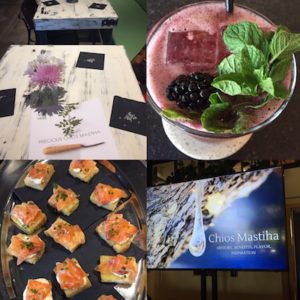
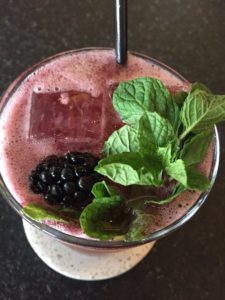
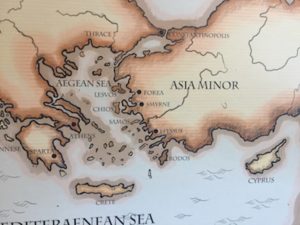


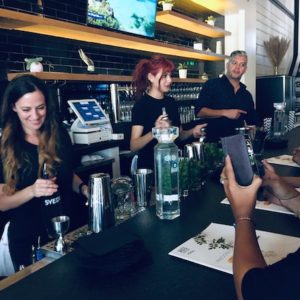
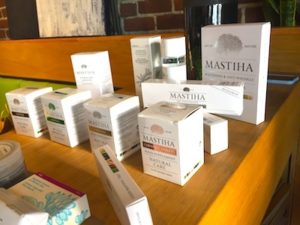
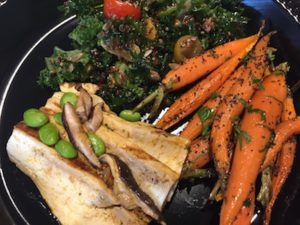

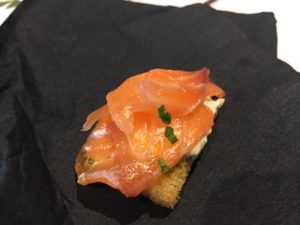

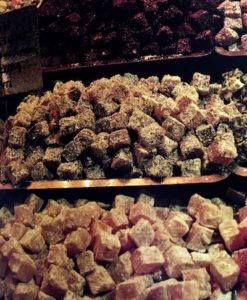


 Gerry Furth-Sides
Gerry Furth-Sides  Barbara Hansen
Barbara Hansen  Chef-owner Alain Cohen
Chef-owner Alain Cohen  Roberta Deen
Roberta Deen  Jose Martinez
Jose Martinez  Nivedita Basu
Nivedita Basu